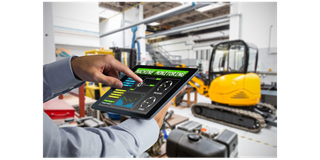What to Consider when Designing an IoT Solution - Part 1: What is Telematics and why is it important?
What to Consider when Designing an IoT Solution
Part 1: What is Telematics and why is it important?
 To develop an end-to-end IoT solution that captures, transports, visualizes and stores data, there is a set of preliminary steps that need to be defined. These include identifying broad and diverse use cases, asset types and key users to help determine what data you need, when you need it and ultimately how to design the application for success. We will be taking a deep dive into these critical areas and what IoT consists of throughout this 4 segment blog series where I will cover the following:
To develop an end-to-end IoT solution that captures, transports, visualizes and stores data, there is a set of preliminary steps that need to be defined. These include identifying broad and diverse use cases, asset types and key users to help determine what data you need, when you need it and ultimately how to design the application for success. We will be taking a deep dive into these critical areas and what IoT consists of throughout this 4 segment blog series where I will cover the following:
1. What is Telematics and why is it important?
2. Telematics and data collection
3. Data transmission
4. Data aggregation, visualization & storage
What is Telematics?
As defined by the Association of Equipment Manufacturers (AEM), Telematics is used to collect, record and transmit vehicle operational data on a web-based platform from which further analysis can be completed. If you look at each one of these functional elements of telematics on their own, they don’t provide much value but combined they are very powerful and enable limitless capabilities. Whether the need is for data analytics to identify the life expectancy of an engine or the ability to see the current location of an asset that is being delivered to the job, telematics functionality is leveraged to provide the solution.
Why is Telematics Important?
Telematics means many different things to different people. From the collection and analysis of data to determine how a machine operates in certain environments, to where the machine is located because it’s due on the jobsite at 10am. Each piece of data looks to increase asset uptime, lower cost of ownership, improve operator performance & safety, provide prognostics for maintenance and/or manage compliance. These benefits are what customers who engage with assets are looking to gain when using a telematics solution. You may be asking, “Who are the customers that engage with assets?” This is a fair but tough question to answer. Customers range anywhere from site owner to operator, mechanic to parts department employee, logistics team member to fleet manager and anyone else who works with or around machinery. We refer to these customers as end-users.
End-users are looking for solutions and machines that provide the benefits mentioned above, while equipment manufacturers (OEMs) of assets are looking for ways to leverage Telematics technology to improve their machines giving them a competitive advantage. For example, an OEM support team will use telematics to remotely troubleshoot a front-end loader in near real-time rather than incurring the high cost of dispatching a Sr. technician just to identify the problem.
Related Blog Posts:
Part 2: Telematics and Data Collection
Part 3: Telematics and Data Transmission
Part 4: Telematics and Data Aggregation, Visualization and Storage
Meet The Author

Chad Repp is the Business Development Manager of the CANect Telematics product family at HED where he works closely with internal and external customers to design, develop and implement best-in-class end-to-end Telematics solutions. Chad has over 20 years of asset mobility experience specifically in solution architecture and design. Prior to joining HED, Chad was the Manager of Business Development & Strategic Planning for Verizon Wireless supporting various end-to-end solutions focused on Telematics and IoT.



